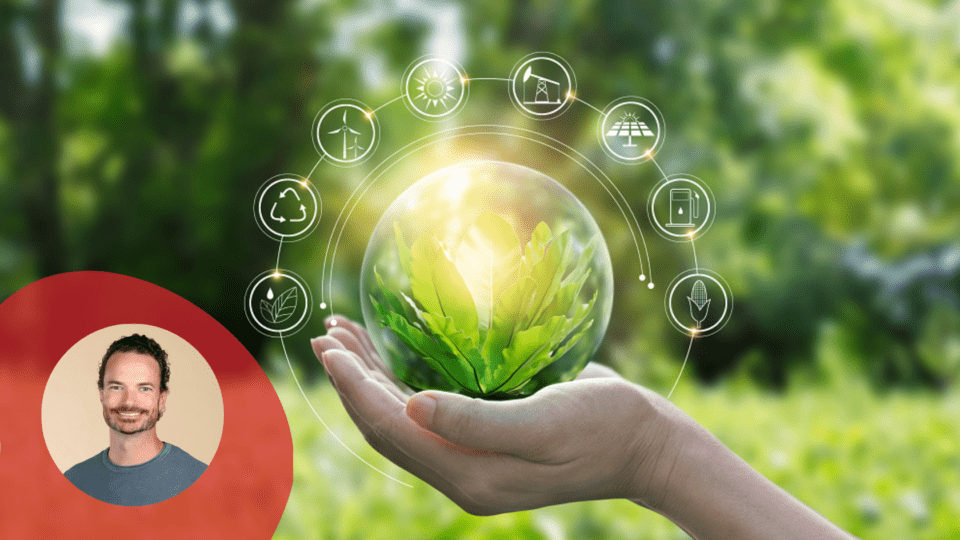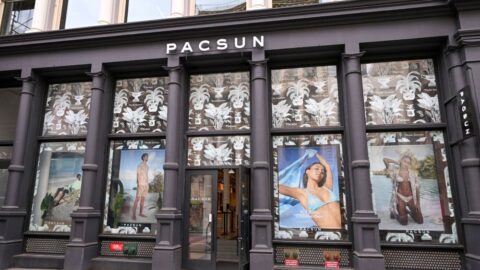As savvy customers pull back the curtain on the carbon footprints of their go-to retailers, credibility in sustainable performance has emerged as a top requirement for brands competition. This search for sustainable practices scales up from a product or service’s initial messaging to the built environment, and it filters through every space in between. With greater transparency comes greater responsibility to reduce the carbon footprints of brick-and-mortar retail spaces.
Clarity on these efforts is beginning to coalesce around the principles of ESG: Environmental, Social, and Corporate Governance. These ESG principles and their accompanying metrics help companies measure and create accountability through a wide array of methods, such as reporting on climate change, diversity and cybersecurity, to name a few. Flexing these new, do-good muscles allows retailers to create significant impacts that can increase interest in a brand, reduce environmental and carbon impacts and lower operations costs long-term.
While complex, this shift in business does not have to be complicated. Five initial steps— Measure; Think upstream; Act downstream; Educate; and Influence — are rooted in practical performance and clearly defined goals to uplift a brand’s mission and effectuate a positive bottom line for people, planet and profits.
Step 1: Measure
Data is everywhere. Retailers have become adept at utilizing data to market their brands and offerings effectively. The same use of easily accessible data can and should be applied to the design and operations of our physical spaces.
It is imperative that retail designers, builders and operators understand how their building systems use resources to design, construct and operate each physical location effectively. Energy, water, waste and carbon are key focus areas and all can contribute to reductions in resource use and operating costs. They are all also target areas of ESG measurement and reporting.
This work is deeply rooted in data-driven decision making from a project’s beginning. Measurement against set data baselines begins during the evaluation of an existing space or the creation of a new one. During the design phase, utilization models of energy, water and carbon (both embodied and operational) are key to reducing the long-term resource use for a facility. During the construction and subsequent operations, these models are further utilized over time to ensure the retailer is achieving its original goals for resource reduction.
Consider the case of H&M and its open-door policy. Several years ago, H&M studied the impact of conditioned air loss and air infiltration through its entry doors that remained open to the exterior to welcome potential customers. Through measurement and modeling, H&M learned that by ending this policy and closing the entry doors, they could potentially save more than $1 million in operating costs combined across the 125+ locations with exterior doors. As H&M realized, small behavioral changes based on simple data points can result in unignorable savings for your facility operations budgets.
Step 2: Think upstream
Rarely do we stop to consider the beginnings of the raw material that makes up our homes, offices, schools and shops. A mixture of natural and man-made, virgin and sometimes recycled, these pieces come from places considered upstream of our projects. We therefore need to understand the impact that a new building, space or object has on the places and communities where its raw materials are extracted, mined, harvested and processed into their final form.
According to the United Nations Environmental Programme (UNEP), “The extraction and processing of materials, fuels and food contribute half of total global greenhouse gas emissions and over 90% of biodiversity loss and water stress. We are using the equivalent of 1.6 Earths to maintain our current way of life, and ecosystems cannot keep up with our demands.”
Our current methods of obtaining raw material are destructive and unsustainable, and we must make a shift to find balance in extraction and production processes. We can begin by gaining a personal understanding of those origin communities — human, plant and animal. Then we can take steps to ensure the ways in which we conduct work beyond our project boundaries to provide positive outcomes and address needs including health, energy, water and social equity.
Step 3: Act downstream
How we transform waste into a usable resource is the key to a sustainable future. In nature, there is no waste, only nutrients for another organism or form of life. Take a hike in the woods and follow the lifecycle of a tree, from a seed in soil to a sapling to the canopy, death to decay to soil and back around again. Along that path is the journey of nutrients for many different organisms, all evolved to carry out specific functions in the cycle. Just as our projects utilize materials from places both far and near to our specific locations, so too does our waste spread outward, often impacting these same places and others farther afield.
When we embrace a circularity mindset, we design with the end in mind. The mindset results in materials created to be reused, re-designed and re-made into something new. It’s a closed system that reduces the impacts of both material extraction upstream and waste downstream of our work.
Imagine creating a product or building intended to be dismantled and, with minimal effort and processing, reassembled into something similar or altogether different than the original. When we reduce waste downstream, we reduce energy use throughout the whole system, broadening opportunities for new industry to emerge from within this circular economy. This renewal can benefit every sector of the design and construction market, ultimately reducing a project’s embodied and operational carbon footprints.
Step 4: Educate
Education is one of the most critical tasks in building a performance mindset to shift the use of resources that create our physical worlds. While the science behind better building performance is well-defined, it’s not always clear or easily accessible. Retail designers, contractors, operators and owners all have a responsibility to simplify and share the why, to help consumers understand the process and intended outcomes of a space’s planned performance.
We achieve the greatest results when we create transparency within our teams while also projecting it out to the world at large. This open sharing of data is critical. When everyone understands the mission and expectations are simple and clear, real change occurs.
Step 5: Influence
The greatest impact a project can have is to generate a positive sphere of influence on the people who come into contact with it. Like a tossed stone in a pond, this contact creates ripples of change far beyond the edges of a site or store. As such, retailers can initiate a perpetual advancement of change, helping shoppers take steps to understand their own ecological footprint and spark action to create a better, more balanced existence for themselves.
We live in a brilliantly complex and infinitely diverse natural world. Over billions of years, this diversity evolved to facilitate a symbiotic balance among all the interconnected systems of life. John Muir saw the strings that connected us when he said “When we try to pick out anything by itself, we find it hitched to everything else in the Universe.” He foresaw a world in which human impact stretched across a wide range of social and environmental conditions. In fact, in very short order, the human species has exerted a technological dominance over all of life, including the natural organizations of living systems we depend on to sustain us.
These interdependent systems both produce and consume resources and process waste — cycling, re-cycling and upcycling matter, upstream and downstream. Impacted and bruised by man-made intervention, these systems are no longer in balance. The scales have tipped toward planetary life support systems failing. We must now turn toward endeavors that heal nature and create ecologically restorative outcomes for the systems of life with which we are all interconnected.
We must once again create a sustainable balance between humans and nature, and to do so we must take steps to ensure our built environment exists in harmony with the natural world. Through these five steps — Measure; Think upstream; Act downstream; Educate; and Influence — we can begin to shift our environments toward a sustainable and regenerative future.
Philip M. Donovan is a National Director of regenerative design and a member of the Regen Colab with Little Diversified Architectural Consulting. His experience over the past 20 years has been deeply rooted in the design of high-performance, zero-energy, regenerative built environments that are focused on the health and well-being of the building occupants, bioregions and social communities they are deeply interconnected too. He has served as a project architect on five net-zero energy schools including NeoCity Academy in Kissimmee, Florida’s first zero energy school, and the project lead for the 4Roots Regenerative Agriculture campus in Orlando, Fla., which is currently being constructed to achieve a net-positive carbon status and is pursuing Living Building Challenge certification. Donovan is also a member of the Florida State AIA advisory council on Resilient Design, the Green Energy Taskforce for Miami-Dade County Public schools and a member of the Orange County Sustainability and Resiliency Committee.








